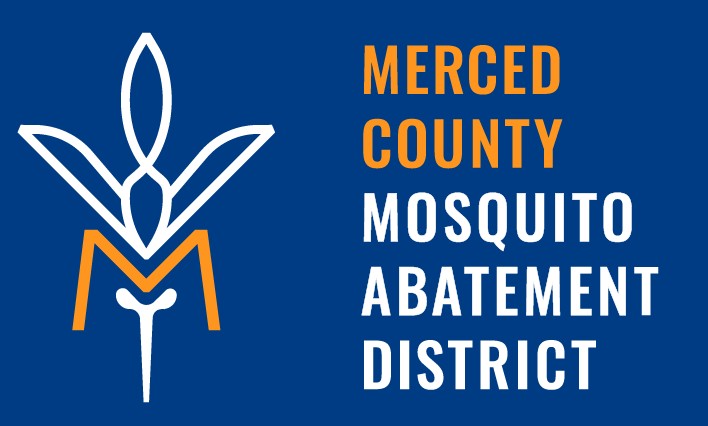Invasive Mosquitoes
Aedes aegypti
Aedes mosquitoes are invasive species that have spread to many counties in California. First detected in Merced County in 2017, these mosquitoes have now infested every town in the county. They are more than just a nuisance—they can pose a serious public health risk.
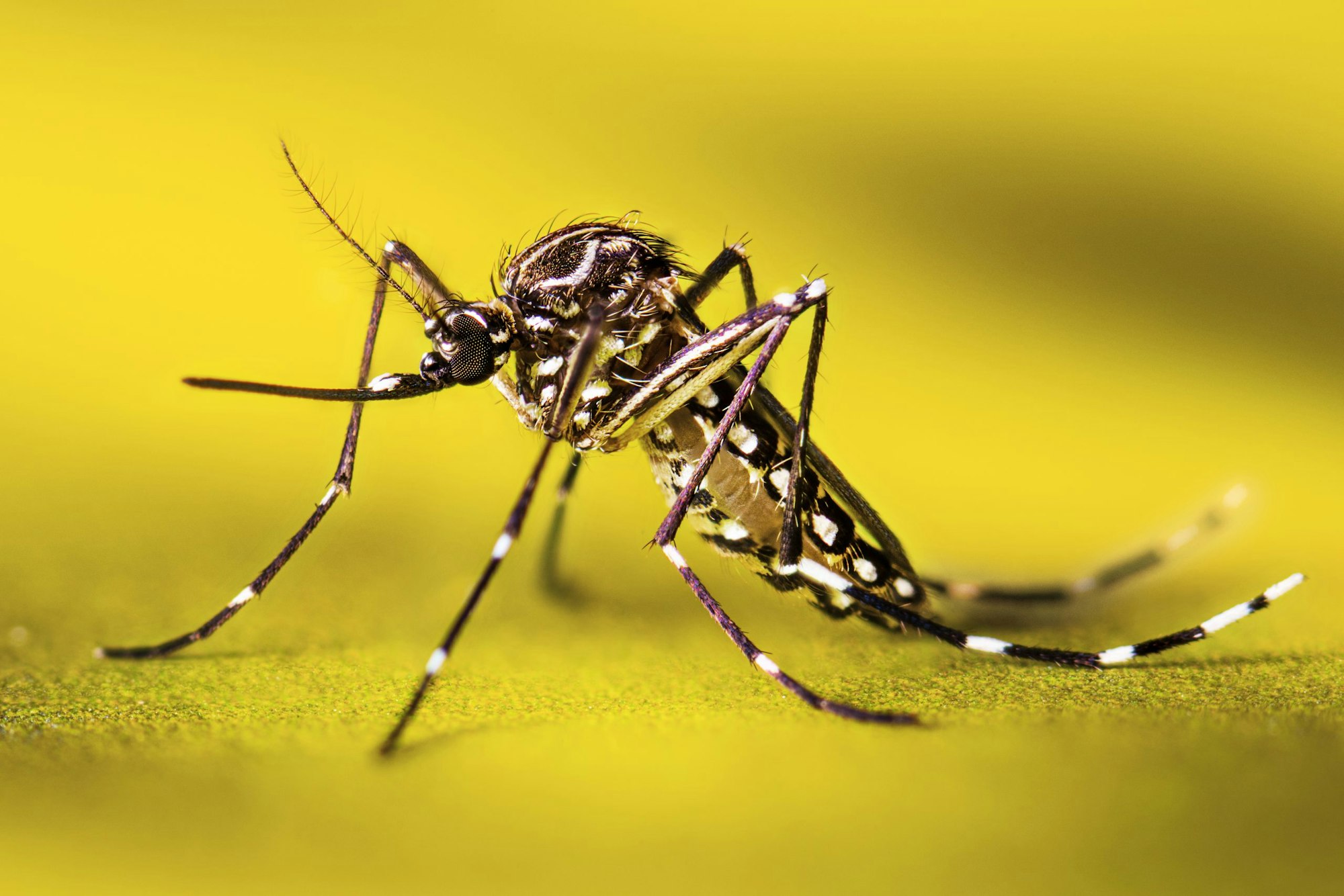
About Aedes Mosquitoes

- Species: Aedes aegypti
- Physical traits: Black and white stripes on legs and addomen
- Habitat: Urban areas, both indoors and outdoors
-
Biting habits: Aggressive day-biters that prefer humans
- Favorite spots to bite: Ankles, wrists, and elbows
- Life cycle: Lay eggs on the inside surfaces of containers prone to holding water, even as little as a bottle cap
- Egg survival: Eggs are resistant to drying out and can survive for years. Each time a container fills with water, new mosquitoes can hatch
- Where you'll find larvae: Yard drains, discarded containers, cans and bottles, trash, plant pot saucers, pet dishes, toys, old tires, rain barrels, and any object that can hold water
.jpg?ixlib=rb-1.1.0&w=2000&h=2000&fit=max&or=0&s=e9af24ccbb3b522fed32132f061dfec5)
Health Risks
Aedes mosquitoes can transmit viruses including:
- Dengue
- Zika
- Chikungunya
Travelers to areas where dengue, chikungunya, and Zika are present can become infected by mosquito bites. These viruses are widespread in other parts of the world including Mexico, Central and South America, the Caribbean, and Asia. Upon returning to California, infected individuals can serve as sources for local mosquitoes to become infected and potentially spread the virus to others. Currently, only dengue has been transmitted locally by mosquitoes in California, and this occurs very rarely. In Merced County, we have never experienced local transmission of dengue, although 4 travel-related cases have been reported since 2019.
- Important: If you feel sick after returning home from travel, see a doctor as soon as possible
- Recommendation: Continue using mosquito repellent for at least three weeks after returning home to prevent potential local transmission of these viruses
Tip: Combining repellent use with eliminating standing water sources around your home is the most effective way to reduce the risk of mosquito-borne disease in California.
How to Prevent Aedes Mosquitoes
Eliminate Standing Water Sources
- Weekly: Dump and scrub containers that hold standing water
- Keep rain gutters clear of debris
- Maintain decorative fountains and swimming pools, or drain them if not in use
- Change water in animal watering dishes every 2-3 days
- Check for yard drains, leaking pipes, and other water-holding spots
Common spots to check:
- Discarded cans, bottles, buckets, and garden tools
- Flower pots and plant saucers
- Old tires and rain barrels
- Toys
- Any container that can hold water
%20(1).jpg?ixlib=rb-1.1.0&w=2000&h=2000&fit=max&or=0&s=80fc77831a4be1526b95e5fcbd8a6502)
.jpg?ixlib=rb-1.1.0&w=2000&h=2000&fit=max&or=0&s=417aa9294dd1a5e579c0d0d4df89fb2b)
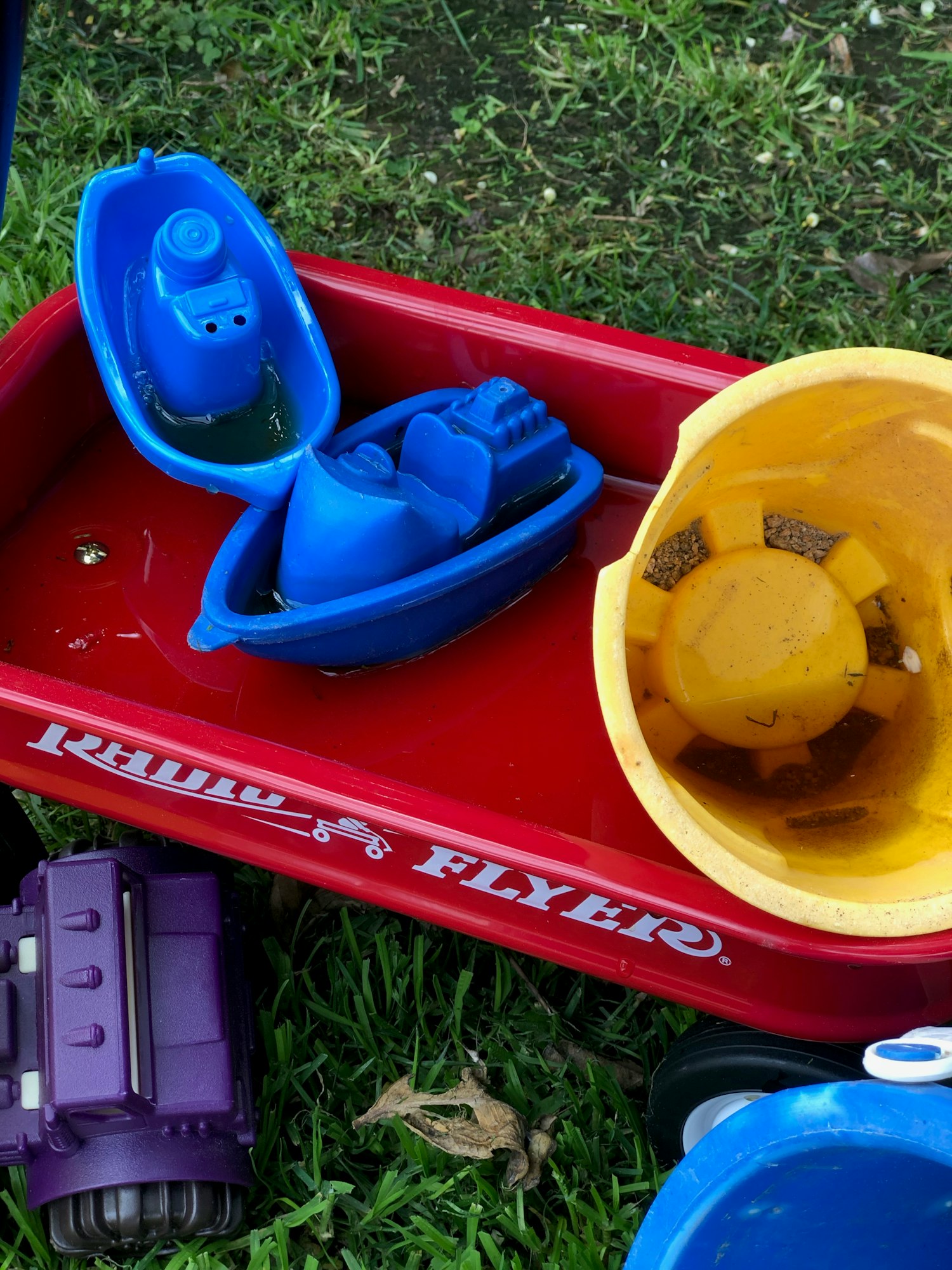
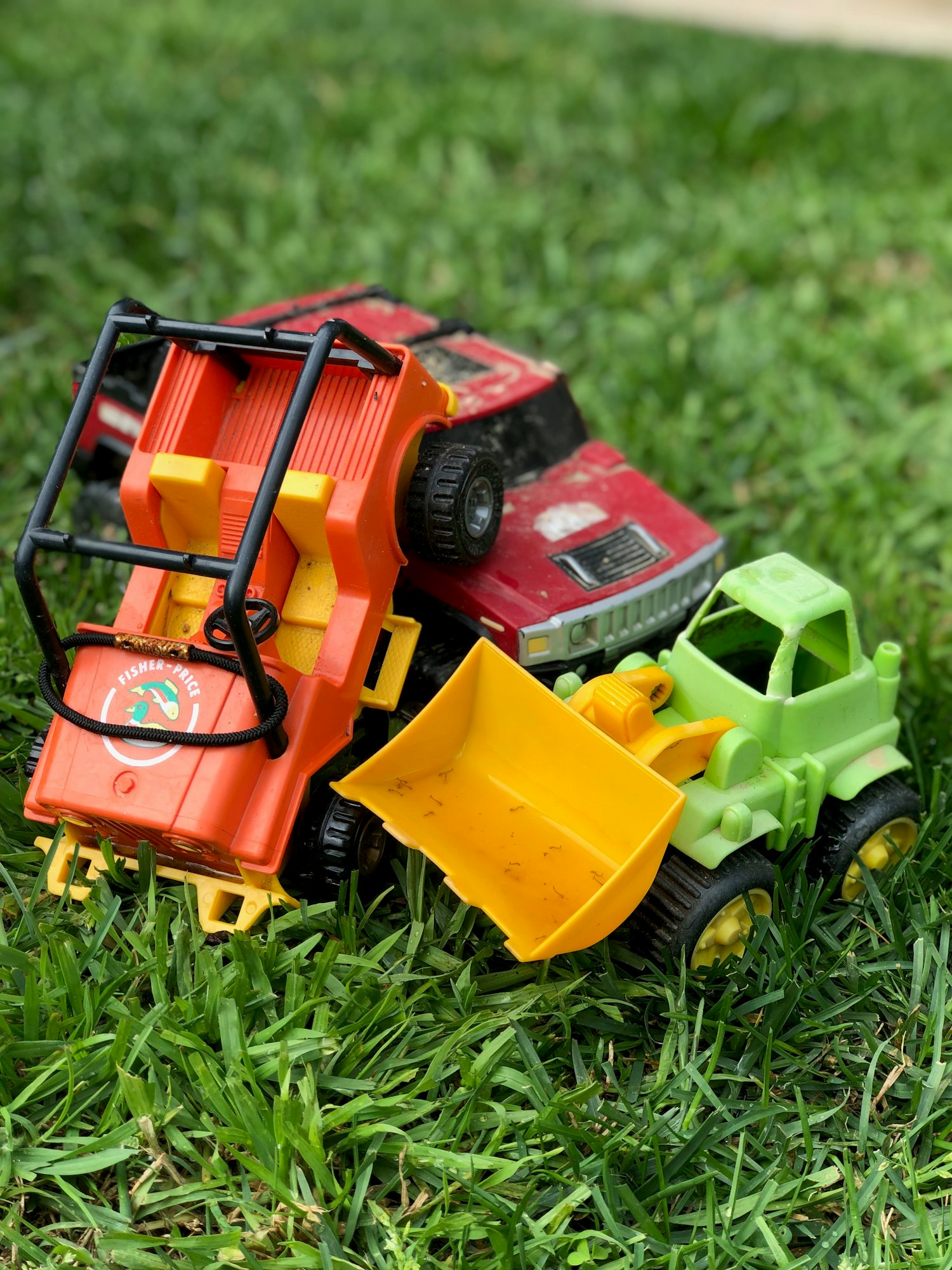
.jpg?ixlib=rb-1.1.0&w=2000&h=2000&fit=max&or=0&s=0d628a72bea0d8f8a782eae12658cfaf)
.jpg?ixlib=rb-1.1.0&w=2000&h=2000&fit=max&or=0&s=edae42eb279fa95416c1d3763eef7bf0)
%20(1).jpg?ixlib=rb-1.1.0&w=2000&h=2000&fit=max&or=0&s=80fc77831a4be1526b95e5fcbd8a6502)
.jpg?ixlib=rb-1.1.0&w=2000&h=2000&fit=max&or=0&s=417aa9294dd1a5e579c0d0d4df89fb2b)


.jpg?ixlib=rb-1.1.0&w=2000&h=2000&fit=max&or=0&s=0d628a72bea0d8f8a782eae12658cfaf)
.jpg?ixlib=rb-1.1.0&w=2000&h=2000&fit=max&or=0&s=edae42eb279fa95416c1d3763eef7bf0)
Screen Yard Drains
- Install fine mesh screens over drain openings to prevent mosquitoes from entering
- Check screens once a month and remove debris to ensure water still flows freely
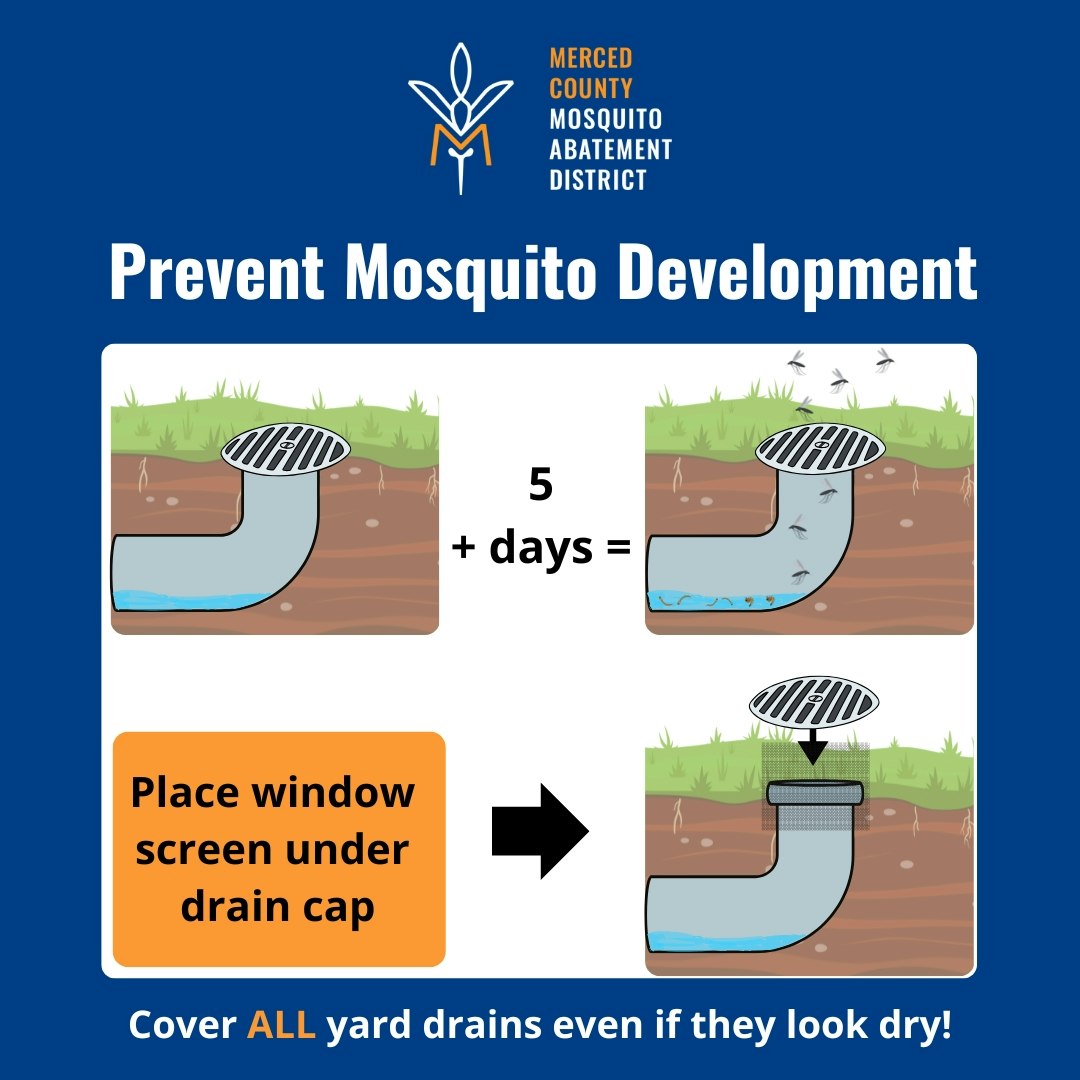
Protect Yourself
- Cover up: Wear long sleeves and pants when outdoors
- Screens: Ensure doors and windows have tight-fitting screens without holes
- Use repellent: Apply insect repellent with DEET, picaridin, IR3535, or oil of lemon eucalyptus to exposed skin and clothing.
Note: Aedes mosquitoes bite primarily during the day. Taking preventive steps around your home and yard can significantly reduce your risk of being bitten and protect your community from mosquito-borne diseases.
Helpful Links:
18-05 MCMAD Press Release - Download pdf.
17-3 MCMAD Press Release - Download pdf.
https://www.cdph.ca.gov/Programs/CID/DCDC/Pages/Aedes-aegypti-and-Aedes-albopictus-mosquitoes.aspx
